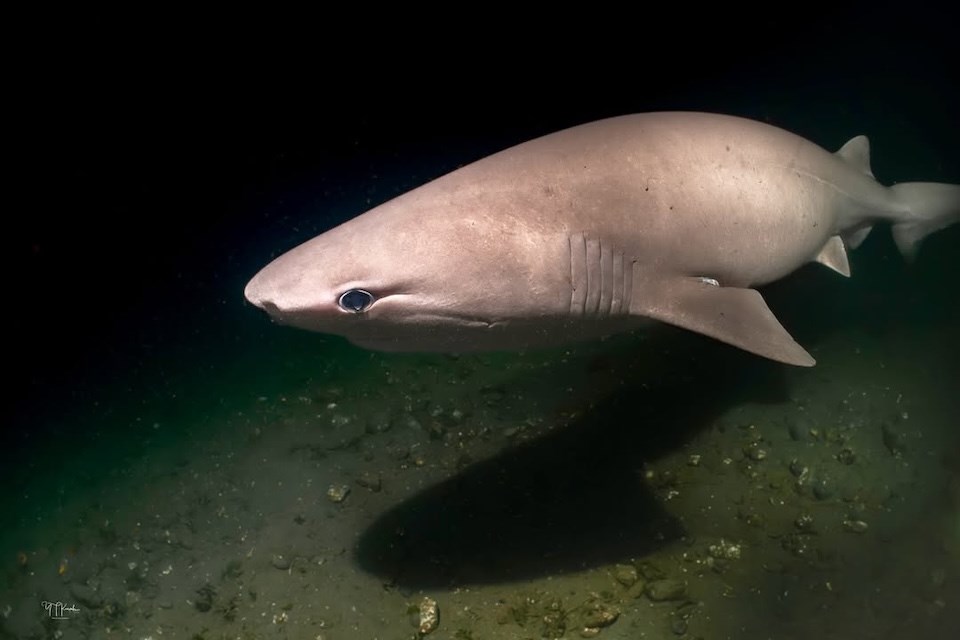A Vancouver resident was up close and personal with an ancient shark species on a recent dive trip.
Diver and photography enthusiast Young Kuah captured videos and images of a bluntnose sixgill shark on a trip not far from Vancouver, in Redondo, Washington.
The local ocean lover spends a great deal of his free time diving in local waters and takes time to learn about the aquatic life he encounters on his expeditions.
Kuah describes seeing a bluntnose sixgill shark, also known as "Hexanchus griseus," as "always a treat," noting that the one he took pictures of on Aug. 2 is a subadult female in the six- to eight-foot range. However, adults can grow up to a jaw-dropping 18 to 20 feet long.
While they are one of the most widespread shark species globally, they are normally found along continental shelves in tropical and temperate seas. They aren't typically aggressive, but aren't well studied due to their preference for deep water.
"Typically, they are found at cold and very deep depths up to 8,200 feet," he notes. "However, there are a few places in the world where these sharks can be seen in shallower waters."
Sixgills have been spotted and documented in B.C. in the shallows at:
- Kelvin Grove, Lions Bay
- Whytecliff Park, West Vancouver
- Alberni Inlet and Barkley Sound on Vancouver Island
- Madrona Point in Nanoose Bay on Vancouver Island
But "these sightings are rare and special," Kuah notes.
Vancouver diver captures images of ancient shark species
Kuah's pictures were taken when there were more regular sightings. The site is known as the Sixgill Shark Capital of the World.
"There are social media reports of sightings almost every other day from divers at Redondo. Every August, I make several trips to Redondo to try to see and take a picture of this rare and special shark," he explains.
"For some unknown reason, in late July and August, at Redondo, the juvenile sixgill sharks come to the shallows and divers have been able to see them at scuba diving depth more often than at other dive sites."
The sharks tend to disappear in September until the following summer.
"Based on fossil records, sixgill sharks are among some of the known ancient shark lineages, appearing as far back as the early Jurassic Period, about 201 to 174.7 million years ago, before the peak of the dinosaurs," he comments.
"They have retained some primitive features, like sixgill slits, like their prehistoric ancestors."



